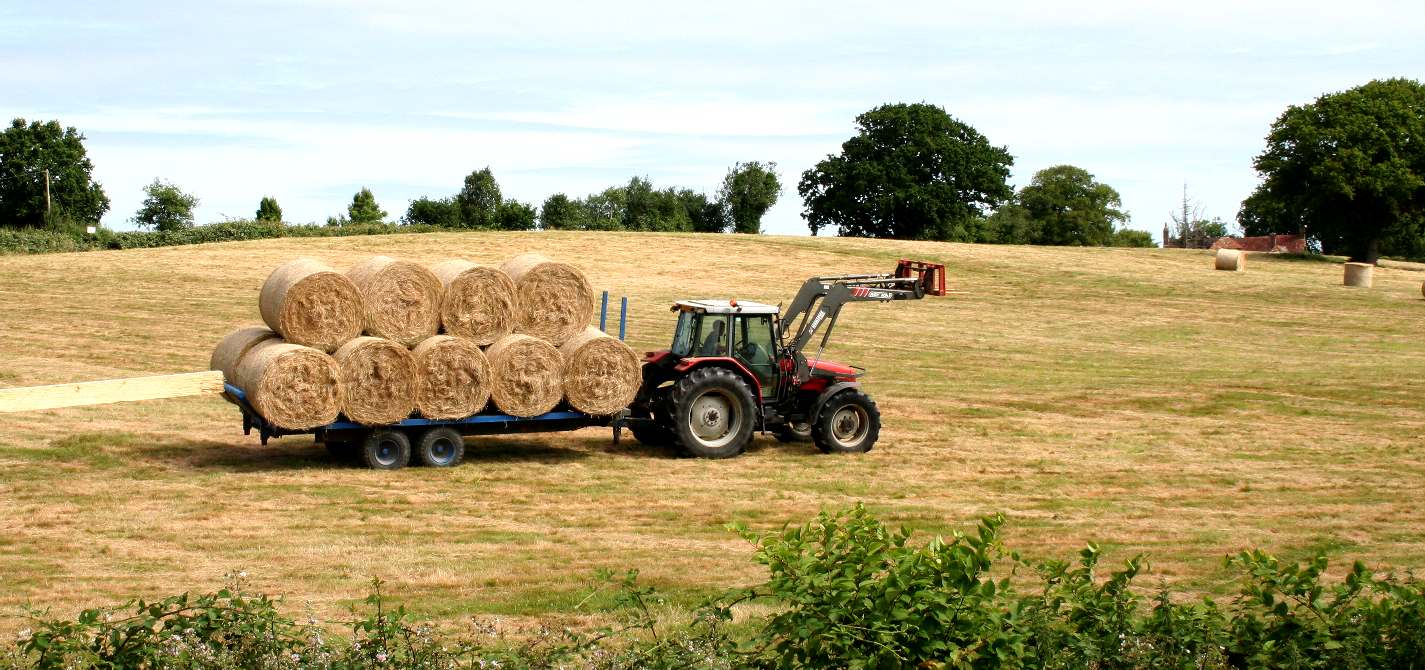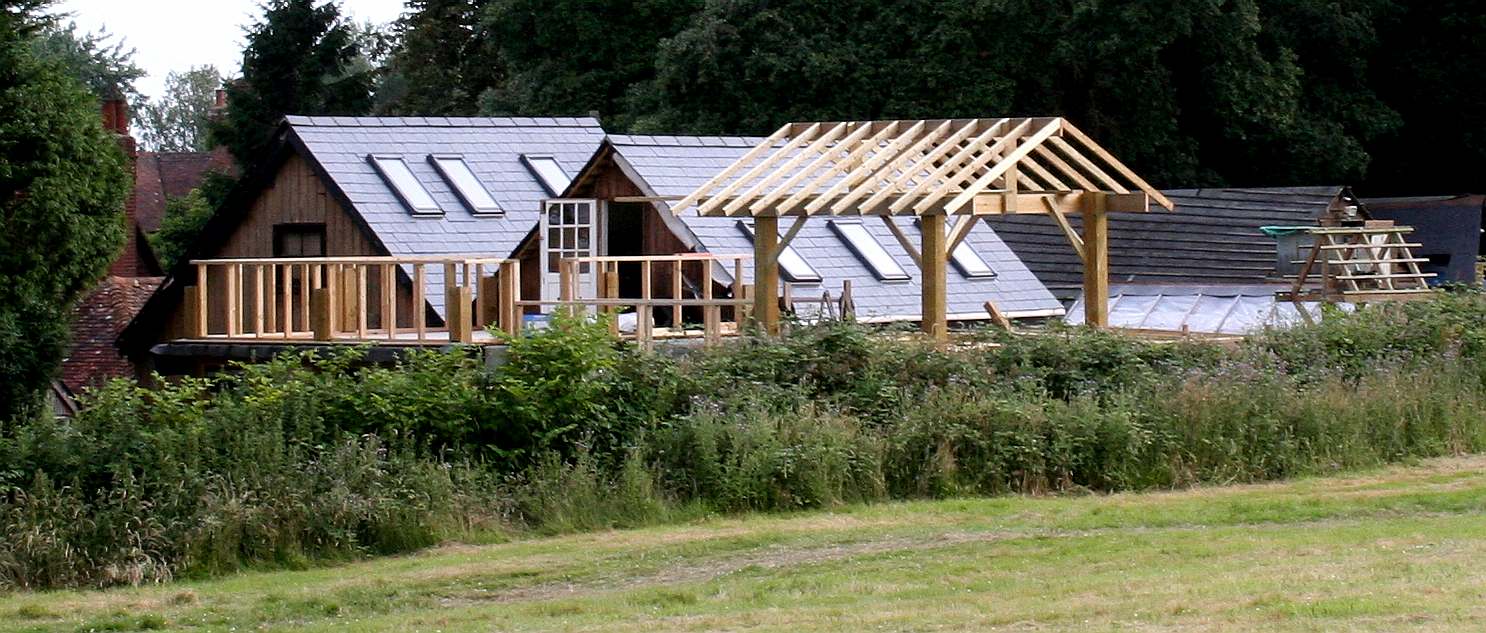
Farming
in Sussex, growing food for self-sufficiency and to feed livestock
East
Sussex, from the Old English Sūþsēaxe ('South Saxons'), is a historic county in South East England that was formerly an independent medieval Anglo-Saxon kingdom. It is bounded to the west by Hampshire, north by Surrey, northeast by Kent, south by the
English
Channel.
Brighton and Hove, part of East Sussex, was made a unitary authority in 1997, and as such, is administered independently of the rest of East Sussex. Brighton and Hove was granted City status in 2000. Until then, Chichester was Sussex's only city. The
Brighton and Hove built-up area is the 15th largest conurbation in the UK and Brighton and Hove is the most populous city or town in Sussex. Crawley, Worthing and Eastbourne are major towns, each with a population over 100,000. Sussex has three main geographic sub-regions, each oriented approximately east to west. In the southwest is the fertile and densely populated coastal plain. North of this are the rolling chalk hills of the South Downs, beyond which is the well-wooded Sussex Weald.
The kingdom of Sussex was founded in the aftermath of the Roman withdrawal from Britain. According to legend, it was founded by Ælle, King of Sussex, in AD 477. Around 827, it was annexed by the kingdom of Wessex and subsequently became a county of England. Sussex played a key role in the Norman conquest of England when in 1066, William, Duke of Normandy, landed at
Pevensey and fought the decisive
Battle of
Hastings.
SETTLEMENTS
The location of settlements in East Sussex has been determined both by its history and its geography. The original towns and villages tended to be where its economy lay: fishing along the coast and agriculture and iron mining on the Weald. Industry today tends to be geared towards tourism, and particularly along the coastal strip. Here towns such as Bexhill-on-Sea, Eastbourne, and Hastings lie. Newhaven and Rye are ports, although the latter is also of historical importance. Peacehaven and Seaford are more dormitory towns than anything else. Away from the coast lie former market towns such as Hailsham, Heathfield and Uckfield; Crowborough is a centre for the Ashdown Forest. Lewes, the County town of East Sussex; and Battle, with its Norman Conquest beginnings, and Wadhurst are the other three towns of significance.
LANDMARKS
The Seven Sisters Park is part of the South Downs National Park. Beachy Head is one of the most famed local attractions, along with the flats along Normans Bay.
Apart from the physical landmarks such as the Downs and the Weald, East Sussex has a great many landmarks of historical interest. There are castles at Bodiam,
Herstmonceux, Lewes and Pevensey; and defence works such as the Martello towers and Eastbourne Redoubt. Battle Abbey, built to commemorate the Battle of Hastings;
Bateman's, home of Rudyard Kipling, The world's oldest
electricity
Generating Station at
Herstmonceux, Hammerwood Park, one of the first examples of Greek Revival architecture in the UK; and the University of Sussex buildings at Falmer are among interesting buildings. Bexhill on sea is also home to the De La Warr Pavilion. East Sussex also includes two chalk hill figures, being the Litlington White Horse and the Long Man of Wilmington, which are both situated
on the Sussex Downs.
GEOLOGY
From a geological point of view East Sussex is part of southern anticline of the Weald: the South Downs, a range of moderate chalk hills which run across the southern part of the county from west to east and mirrored in Kent by the North Downs. To the north lie parallel valleys and ridges, the highest of which is the Weald itself (the Hastings beds and Wealden Clay). The sandstones and clays meet the sea at
Hastings; the Downs, at
Beachy
Head. The area contains significant reserves of shale
oil, totalling 4.4 billion barrels of oil in the Wealden basin according to a 2014 study, which then Business and Energy Minister Michael Fallon said "will bring jobs and business opportunities" and significantly help with UK energy self-sufficiency. Fracking in the area is required to achieve these objectives, which has been opposed by environmental groups. In 2022, the focus is on renewables, that are cheaper and do not pollute with greenhouse gases.
The chalk uplands of the South Downs occupies the coastal strip between Brighton and
Eastbourne. There are two river gaps: the Rivers Ouse and Cuckmere. The Seven Sisters, where the Downs meet the sea, are the remnants of dry valleys cut into the chalk; they end at Beachy Head, 530 feet (162 m) above sea level. To the east of Beachy Head lie the marshlands of the
Pevensey
Levels, formerly flooded by the sea but now enclosed within a deposited beach. At Bexhill the land begins to rise again where the sands and clays of the Weald meet the sea; these culminate in the sandstone cliffs east of Hastings. Further east are the Pett Levels, more marshland, beyond which is the estuary of the River Rother. On the far side of the estuary are the dunes of Camber Sands. The highest point in the county is Ditchling Beacon on the South Downs, which has a maximum elevation of 248 m (814 ft) and is classed as a Marilyn.
The Weald occupies the northern borderlands of the county. Between the Downs and Weald is a narrow stretch of lower lying land; many of the rivers and streams occupying this area originate in the Weald. The High Weald is heavily wooded in contrast to the South Downs; the Low Weald less so. Part of the Weald is the Ashdown Forest.
EARLY MODERN SUSSEX
The Wealden iron industry expanded rapidly, especially after the first blast furnace arrived in Sussex 1496, from the Low Countries, which greatly improved efficiency. The industry was strategically important and flourished into the 17th century, after which it began to decline. It also brought widespread deforestation of parts of the Sussex Weald.
The Sussex coast was greatly modified by the social movement of sea bathing for health which became fashionable among the wealthy in the second half of the 18th century. Resorts developed all along the coast, including at Brighton,
Hastings and Worthing.
LATE MODERN and CONTEMPORARY SUSSEX
Poverty increased and by 1801 Sussex had the highest poor law rates in England, with 23 per cent of its population (37,000 people out of 160,000) living on the breadline and receiving regular relief. Socially acceptable crimes including protest, riot, collective action and smuggling were commonplace in Sussex and were seen by many as a legitimate way to address grievances and assert freedoms.
Sussex became a centre for radicalism. Thomas Paine developed his political ideas in Lewes, and later wrote Common Sense which was influential in the American Revolution.
As part of the Local Government Act 1972, the eastern and western divisions of Sussex were made into the ceremonial counties of East and West Sussex in 1974. Boundaries were changed and a large part of the rape of Lewes was transferred from the eastern division into West Sussex, along with Gatwick Airport, which was historically part of the county of Surrey.
Piltdown
in East Sussex is famous for the missing link hoax, perpetrated by
Charles Dawson in 1912, when he fabricated Piltdown
Man from ape and human bones, of more modern origin.
SUSTAINABILITY
- AFFORDABLE HOUSING
There
is an almost total lack of affordable housing in Sussex. Sustainability
and the 'Blue'
or Circular
Economy, not being high on the agendas of local authorities. But
then we must remember that Margaret
Thatcher sold off our social housing, and the Conservative
Party have continued to promote the build of expensive housing as
investments to launder
overseas money. So creating generations of financial
slaves.

RARE
SURVIVING TIMBER BUILDING - When
Howard Carter discovered Tutankhamun's
tomb in 1922, the dig was not much to look at. A lot of sand and a small
entrance, amongst a desert of dunes. But once inside, the small chamber, the Egyptologist realised
that the monument was intact. Hence was a treasure trove.
The old
Generating
Station in Lime
Park, at Herstmonceux, is not of outstanding architectural design or construction (except for the use of
redwood and extensive architrave). What is astonishing is that it remains extant, where
other early electricity
stations have been demolished by property
developers, or rotted away.
Indeed, many former residents in
Lime
Park, and two recent newcomers, have not
grasped that this is all that is left as evidence of our transition from
coal, to electricity. It is believed to be the only example surviving anywhere on the planet
of its kind, including load levelling via a giant battery store, comprising roughly half of the building,
with substantial shelves where weighty lead-acid batteries were stored
in glass containers, to power the whole village of Herstmonceux, and Lime
Park
estate, overnight.
The
Trust that occupies the buildings, needs help to maintain this interesting industrial complex. The
buildings have no reasonable or beneficial use, the local authority
doing all they can to prevent conservation. Placing manifold obstacles
in the way, where they should be helping those interested in restoring
the historic asset, to achieve that ideal.
LINKS
& REFERENCE
https://www.eastsussex.gov.uk

